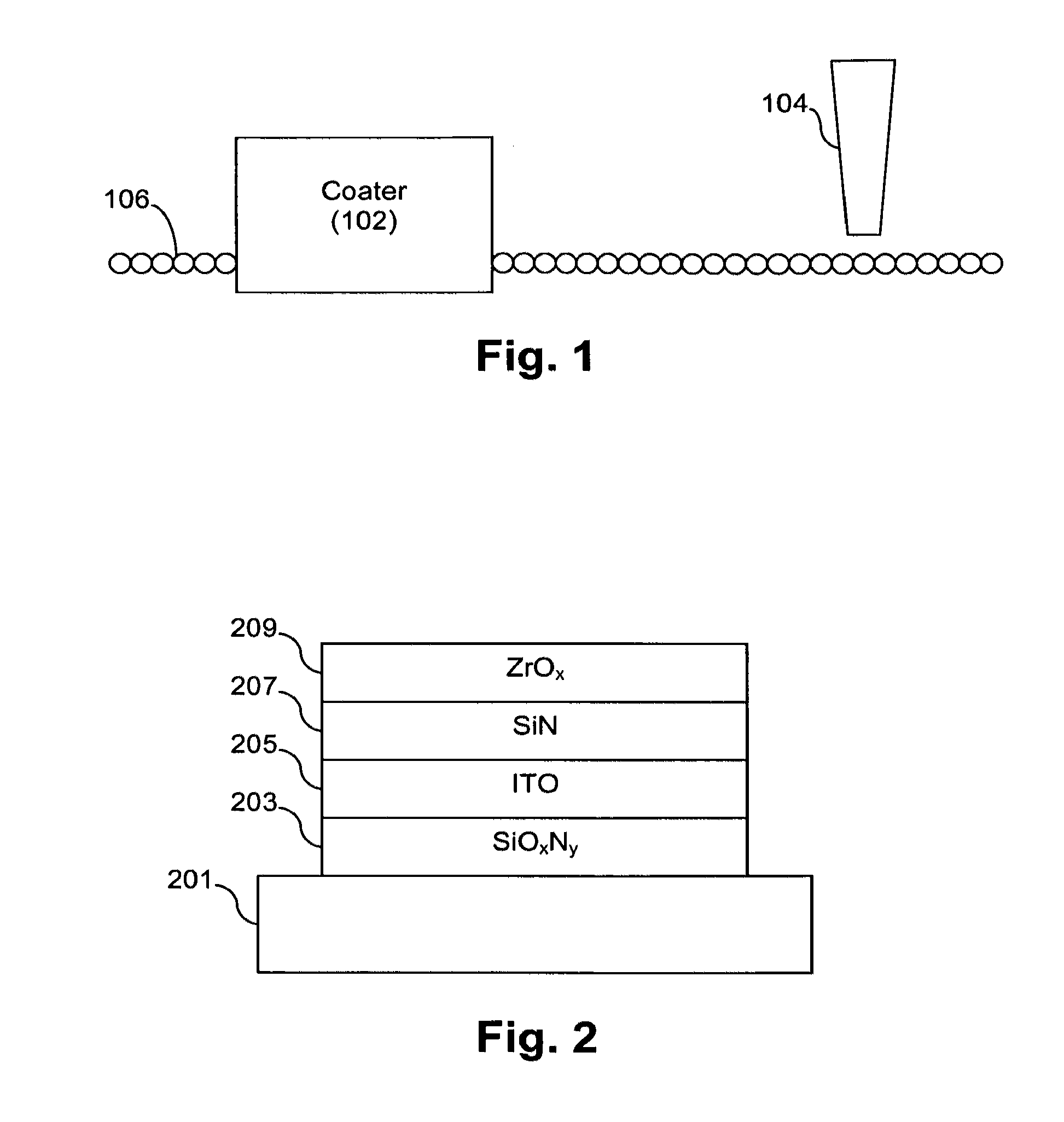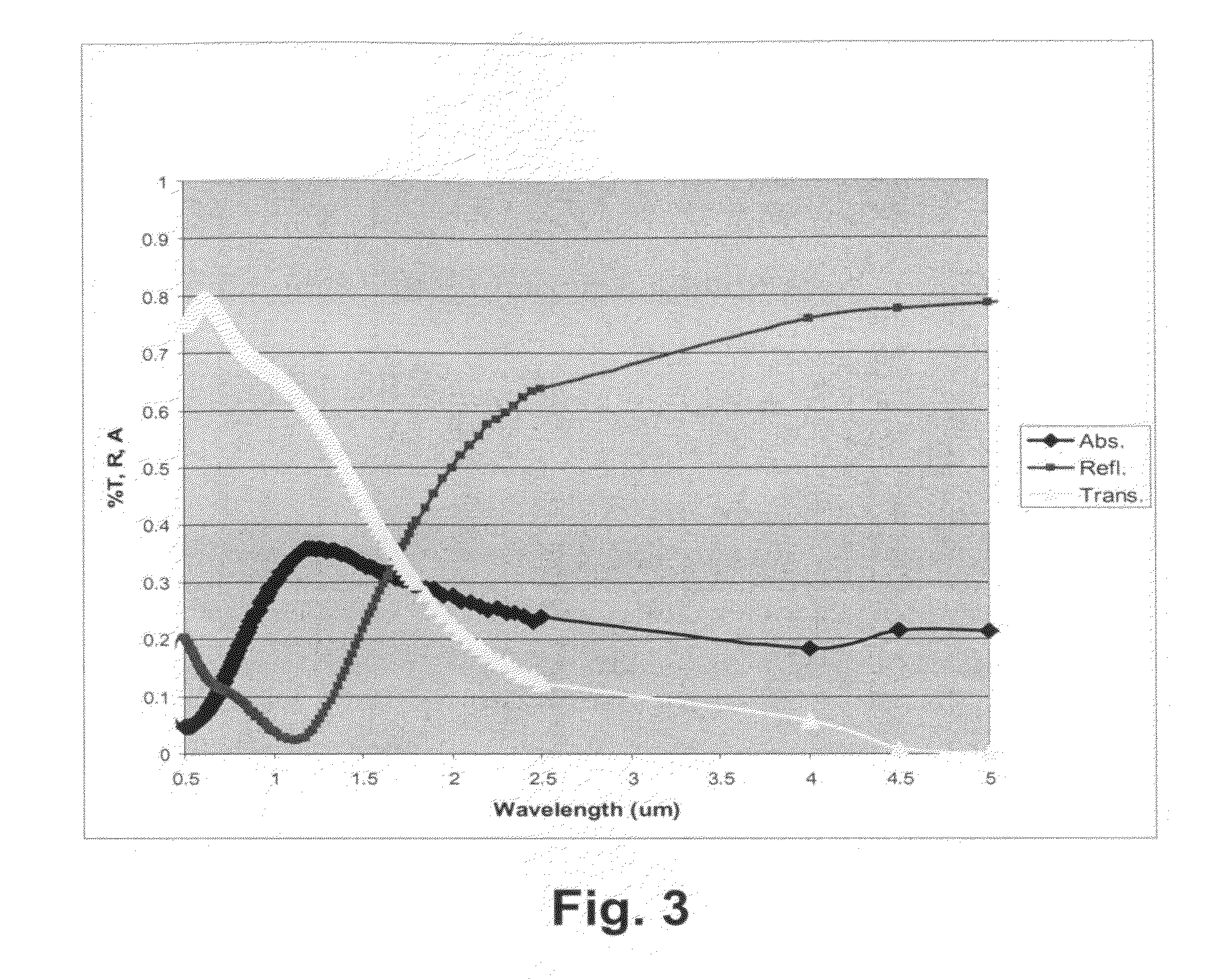System and/or method for heat treating conductive coatings using wavelength-tuned infrared radiation
a technology of infrared radiation and heat treatment method, which is applied in the direction of lighting and heating apparatus, furnaces, etc., can solve the problems of significant stress changes in glass, and it is not possible or practical to use radiative, conductive, or convective furnace heating processes commonly used, etc., to reduce the impact on the underlying substrate
- Summary
- Abstract
- Description
- Claims
- Application Information
AI Technical Summary
Benefits of technology
Problems solved by technology
Method used
Image
Examples
example
[0027]A test was performed using a short-wave infrared (SWIR) furnace incorporating quartz lamps. A peak IR emission wavelength of 1.15 μm was used to heat the coating. This wavelength was determined by analyzing the spectral characteristics of the coating and the glass substrate. The power density of the SWIR furnace is 10.56 kW / ft2 (bulb output is 80 W / in, with mounting on 1″ centers). Heating times ranged from 12-130 sec with 12 sec intervals. Heating elements were about 4″ from the glass surface, although the heating elements may be raised or lowered in different example embodiments of this invention.
[0028]FIG. 2 is an example coating upon which the IR techniques of certain example embodiments were used. FIG. 2 includes a glass substrate 201 supporting a multilayer coating. The multilayer coating comprises an ITO layer 205 sandwiched by two silicon-inclusive layers. The ITO layer 205 in the FIG. 2 example embodiment is 120 nm thick. A first layer 203 comprising SiOxNy layer is i...
PUM
| Property | Measurement | Unit |
|---|---|---|
| Length | aaaaa | aaaaa |
| Time | aaaaa | aaaaa |
| Time | aaaaa | aaaaa |
Abstract
Description
Claims
Application Information
 Login to View More
Login to View More - R&D
- Intellectual Property
- Life Sciences
- Materials
- Tech Scout
- Unparalleled Data Quality
- Higher Quality Content
- 60% Fewer Hallucinations
Browse by: Latest US Patents, China's latest patents, Technical Efficacy Thesaurus, Application Domain, Technology Topic, Popular Technical Reports.
© 2025 PatSnap. All rights reserved.Legal|Privacy policy|Modern Slavery Act Transparency Statement|Sitemap|About US| Contact US: help@patsnap.com



